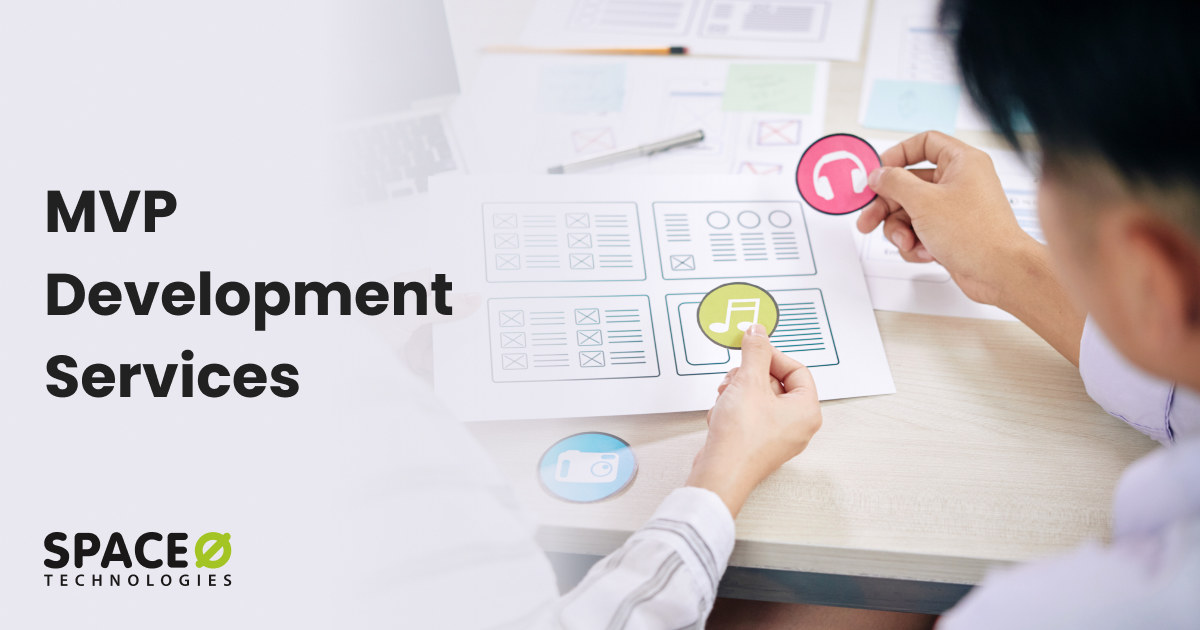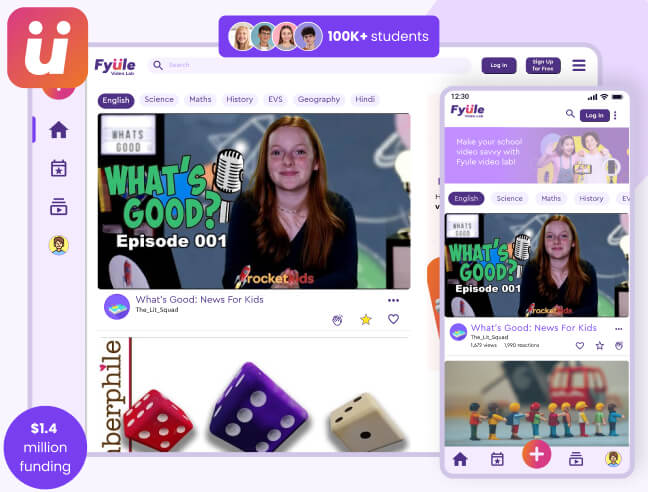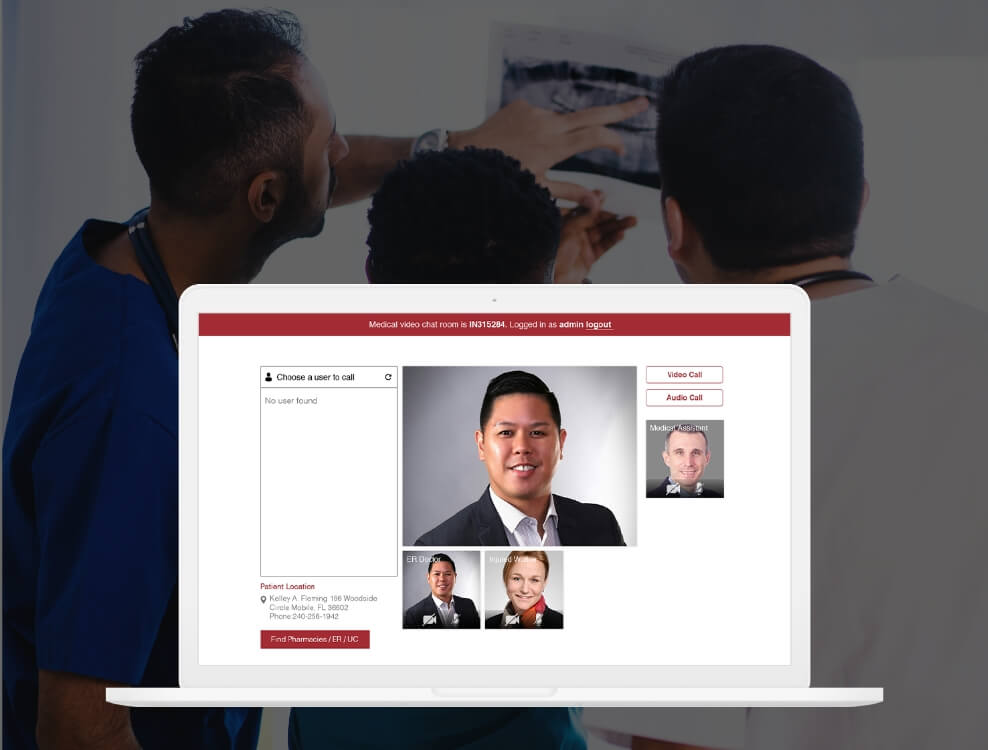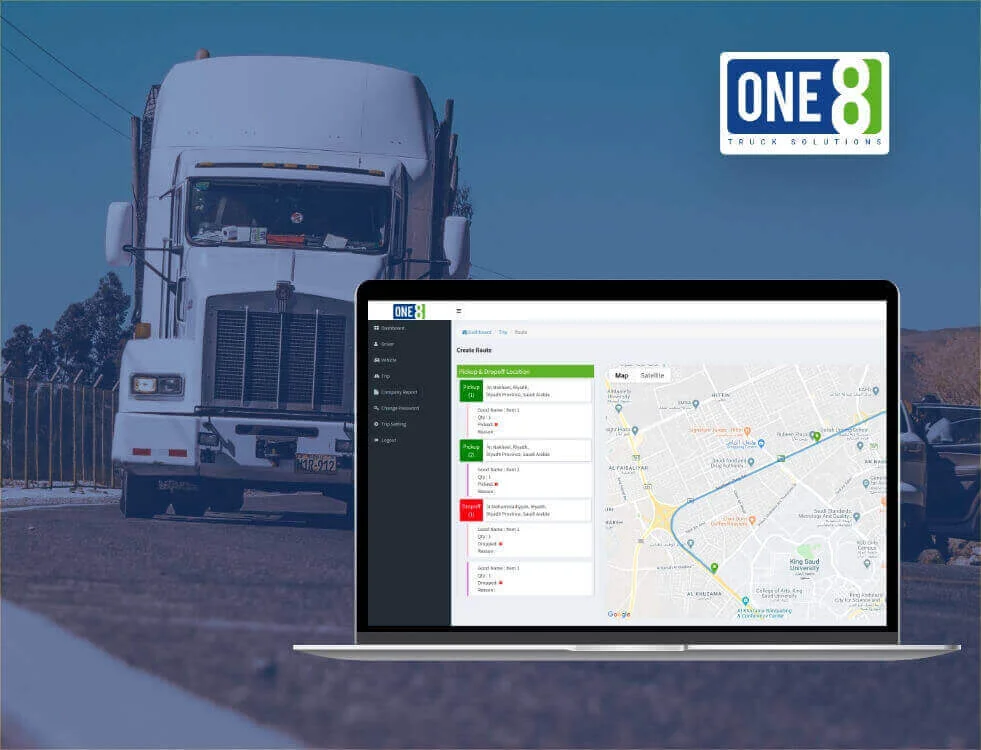Let’s Discuss Your Project
Custom MVP Software Development Services We Offer
Our MVP development services focus on building a basic version of your product with only essential features to test and improve based on user feedback.
MVP Consulting
Best if you are at the initial stages of product conceptualization and want to validate your business idea. We conduct market analysis and business analysis and guide you with must-have functionality, technology stack to use, and overall provide you with a detailed MVP development plan and strategic insights.
MVP Development
Best when you have already validated your idea and are ready to take your product idea to life. Specializing in rapid MVP app and web development, we help prioritize essential functions, minimizing costs. From coding to quality assurance, security configuration, and deployment, our team has the skills to develop market-ready MVPs.
MVP Prototyping
Best when you want to visualize and refine your product user’s experience before developing the full-scale product. Our software development team has extensive experience creating MVP designs and clickable prototypes using Adobe XD, enabling you to test and refine your product’s user experience before full-scale development.
MVP Improvement
Best when you want to refine and improve your launched MVP. We focus on analyzing user feedback and performance data to identify and implement enhancements. We help you optimize costs and effort, set measurable KPIs, and plan for transitioning toward full-fledged MVP development.
Full-scale Product Development
Best when you have successfully validated your market fit and are ready to scale. We help you to transition from an MVP to a full-scale product with an expanded feature set, enhanced security, and scalability to manage growing users. You get guidance for a smooth transition and growth.
Our MVP Development Process in 6 Steps
Your app will go through these 6 MVP development stages.
01
Problem Identification and Market Analysis
Our sales team and market research team conduct thorough research to pinpoint the exact problem and identify the target market.
Techniques Used
- Surveys, industry reports, user interviews.
Output
- Detailed market analysis report
- Defined target audience and user personas.
02
Feature Ideation and Prioritization
Together, our Product team and BA team brainstorm potential features and prioritize them to align with user needs and business goals.
Techniques Used
- Brainstorming workshops, MoSCoW(Must have, Should have, Could have, and Won’t have this time) prioritization method.
Output
- Comprehensive list of proposed features
- Prioritized feature roadmap
03
MVP Design and Prototyping
The BA team and Design Team create the user interface and experience, turning concepts into interactive prototypes for early feedback.
Tools/Techniques Used
- Figma or Sketch for prototyping, and user flow diagrams.
Output
- High-fidelity prototypes.
- UI/UX design specifications.
04
MVP Development
The Development Team transforms prototypes into a functional MVP, using agile methodologies for efficiency and flexibility.
Techniques Used
- Agile development frameworks (Scrum or Kanban), technology stack selection based on project requirements.
Output
- Deployable MVP.
- Development documentation detailing the technology stack and architectural decisions.
05
Testing and User Feedback
The QA Team ensures the MVP meets quality standards while the sales team gathers and analyzes user feedback for insights.
Tools/Techniques Used
- Automated testing tools (e.g., Selenium), and user testing sessions.
Output
- QA reports and user feedback compilation.
- List of identified improvements and adjustments.
06
Iteration and Future Planning
Based on feedback, all teams collaborate on iterating the MVP and strategizing for scaling and continuous development.
Tools Used
- Feedback analysis tools, and project management software (e.g., Jira).
Output
- Updated MVP version.
- Future development and scaling plan.
From our real project experience
Less is often more. Start with the simplest version of your idea that provides value; complexity can wait until you are sure you are on the right path.
PoC vs. Prototype vs. MVP — Which One Do You Need?
To determine whether you need a Proof of Concept (PoC), a Prototype, or a Minimum Viable Product (MVP), here are the key factors to consider:
Proof of Concept (PoC)
Primary Need
You are testing the feasibility of a specific concept or technology for the first time.
Key Focus
Technical idea validation is your primary goal, rather than user interaction or market fit.
Feedback & Validation
Internal validation to ensure the technical feasibility of the idea.
Decision Guidance
Choose a PoC if your primary challenge is technical feasibility.
Prototype
Primary Need
You want to explore the design and user experience of your product without fully developing it.
Key Focus
Feedback on the product’s look, feel, and flow is crucial at this stage, potentially from both internal teams and a limited external audience.
Feedback & Validation
Design and usability feedback to refine complex interactions or designs.
Decision Guidance
Choose a Prototype for design and user experience validation.
Minimum Viable Product (MVP)
Primary Need
You are ready to test your product hypothesis with real users in a live environment.
Key Focus
Gathering insights on market demand and user behavior with the least effort and cost.
Feedback & Validation
Market validation to test and refine the product towards market fit based on real user feedback.
Decision Guidance
Choose an MVP for testing market hypotheses and early user engagement.
Looking to Develop an MVP of Your Idea?
Let’s talk. Discover how we build custom MVP SaaS solutions with quick validation within your budget.
Why Choose Space-O as an MVP Development Company
Here are the 4 core reasons to choose Space-O for MVP development.
How Long Does It Take to Build an MVP?
Here is a brief bifurcation of the time it takes to build a minimum viable product.
Project Start
1–2 weeks for requirements clarification
PoC
1–3 months to create a proof of concept
Prototype
2–4 weeks to build an interactive prototype
MVP
4–6 months to 2 years to build a custom MVP from scratch
Explore Our MVP Success Stories
Our Software Solutions Recognized & Featured In
Looking for Technical Expertise to Develop MVP?
We specialize in MVP development, offering expertise in a range of technologies like React, Node.js, and MongoDB. From ideation to deployment, we work with you to bring your vision to life.
Feedback From Our Clients
Software Development Methodologies We Use
We use these methodologies to ensure optimal software
development tailored to your requirements.
Agile
With extensive experience in Agile methodologies like Scrum and Lean, we excel at iterative development, continuous improvement, and delivering working software incrementally based on customer feedback.
Lean Startup
Our team has embraced the Lean Startup methodology, allowing us to build and validate minimum viable products (MVPs) through a structured approach of testing assumptions, gathering customer insights, and iterating based on real-world data.
Rapid Application Development (RAD)
We leverage our expertise in Rapid Application Development (RAD) to quickly build functional prototypes through iterative cycles, enabling us to deliver high-quality MVPs efficiently while continuously incorporating user feedback.
Technology Stack We Use for MVP Development
Here are the technologies we use to offer custom MVP app development services.
Benefits of Minimum Viable Product Development Services
Here are the benefits you get from MVP development services
Validate Your Business Idea
An MVP allows you to test your product concept with real users, gathering invaluable feedback to refine your idea and ensure it resonates with your target market before committing significant resources.
Faster Time to Market
By focusing on essential features, an MVP is developed and launched much faster than a fully-fledged product, giving you a competitive edge and enabling you to capture early market share.
Cost-effective Development
Building an MVP requires fewer resources than developing a complete product, minimizing initial investment and reducing the risk of launching an untested idea.
Compelling Product Pitch
A functional MVP serves as a powerful tool to showcase your product’s potential to investors, partners, and stakeholders, making your pitch more convincing and increasing your chances of securing funding or support.
User-centric Refinement
Leveraging user feedback from the MVP, you iterate and refine your product to meet the specific needs and preferences of your target audience, ensuring you deliver a solution that truly resonates with them.
Early Adopter Engagement
Launching an MVP allows you to attract early adopters, fostering a loyal user base and gaining valuable insights from their experiences, which shape the future development of your product.
Industries We Serve
We provide MVP development services across various industry verticals.
Develop MVP Software Tailored to Your Industry Needs
As a leading MVP development agency, we are well-versed in using MVP methodologies to validate ideas, refine product offerings, and drive success in diverse sectors.
Common Queries Answered
How to choose a reliable MVP software development company
To choose a leading MVP development company, consider factors such as experience, technical proficiency, adherence to agile methodology, communication transparency, client-centric approach, and post-launch support. Evaluate the company’s portfolio, client testimonials, and technical expertise to ensure they meet your project requirements.
What are the benefits of the MVP development approach?
The MVP development approach offers several benefits, including cost efficiency, faster time-to-market, validation of the concept, risk mitigation, and iterative improvement. By focusing on essential features, MVPs enable quicker product launches, validate market demand, and allow for continuous improvement based on user feedback
What is MVP development?
MVP development is the process of creating a minimum viable product, typically through iterative and incremental stages. It involves identifying the core features and functionalities essential for the product’s initial release, developing and launching the MVP to market quickly, gathering feedback from users, and iteratively improving the product based on insights gained.
Which are the 3 elements of MVP?
The three elements of an MVP are:
- Minimum Features: The MVP includes only the essential features required to address the primary problem or need of the target audience.
- Viability: The MVP must be viable in the sense that it provides sufficient value to early adopters, enticing them to use and engage with the product.
- Product: Despite being minimal, the MVP must still be a complete and functional product that users interact with to achieve their desired outcomes.
What is the difference between a prototype and a minimum viable product (MVP)?
A prototype is a preliminary version of a product used to demonstrate its functionality and gather feedback, typically focusing on specific aspects or features. In contrast, an MVP is a fully functional product with the minimum features required to address a specific problem or need of the target audience. While prototypes are often used for testing and validation purposes, MVPs are released to real users to gather feedback and validate market demand.
Frequently Asked Questions
Do you sign an NDA?
Yes, we take the confidentiality of our clients’ projects seriously. We are open to signing Non-disclosure Agreements (NDAs) to protect your sensitive information and intellectual property.
What steps do you take to protect my data?
We implement strict security measures to safeguard your data, including encryption, access controls, regular security audits, and compliance with industry standards such as GDPR and HIPAA where applicable.
How do you handle intellectual property rights and ownership of the developed software?
Upon project completion, you will retain full ownership of the intellectual property rights to the developed software. We can discuss specific arrangements regarding IP ownership in our contract agreements.
Do you build software in compliance with the GDPR, HIPAA, and other international standards?
Yes, we adhere to GDPR, HIPAA, and other relevant international standards when developing software, ensuring data privacy, security, and regulatory compliance. For example, we recently developed a healthcare management platform that fully complies with HIPAA regulations, ensuring the secure handling of patient data and maintaining strict confidentiality standards.
How much does it cost to develop an MVP?
The MVP development cost varies depending on factors such as project scope, complexity, and technology stack. We offer tailored pricing based on your specific requirements and budget constraints.
How much does it cost to hire a developer for our project? What kind of pricing do you offer?
We offer flexible pricing models, including hourly rates, fixed-price projects, and dedicated team arrangements. The cost of hiring a developer is determined by their level of expertise, experience, and project duration, ensuring you get the best fit for your budget and objectives.
How does our interview process ensure the right mobile app developers for your project?
We conduct thorough interviews and technical assessments to onboard skilled and experienced mobile app developers perfectly suited for your project. Our process includes probing technical questions, practical coding challenges, and in-depth discussions on past projects to evaluate each candidate’s capabilities.
How fast can we get people assigned to our project?
We aim to assign dedicated team members to your project as quickly as possible, typically within a few days of finalizing the contract and project scope.
How do you prioritize features for the MVP?
We utilize frameworks such as the MoSCoW method (Must-have, Should-have, Could-have, Won’t-have) to prioritize features effectively. This approach helps us identify essential features that are critical for the MVP’s success (Must-have), followed by those that are important but not urgent (Should-have), and additional features that could enhance the product (Could-have). By categorizing features in this manner, we ensure that we focus on delivering the core functionality needed to meet your business goals and user needs while allowing for flexibility and adaptation throughout the development process.
How do you ensure product-market fit?
We conduct thorough market research, gather user feedback, and iterate on the MVP based on real-world insights to ensure it meets the needs of your target audience and aligns with market demand.
How do you handle communication and collaboration with clients during the development process?
We maintain regular communication channels, including email, video calls, and project management tools like Slack, Jira, Trello, and Basecamp to keep you updated on project progress, discuss any concerns, and address feedback promptly.
How do you ensure effective communication across different time zones?
We accommodate clients in different time zones by scheduling meetings and communication sessions at mutually convenient times. We also provide written updates and documentation to ensure transparency and continuity of communication.
How do you handle changes and iterations during development?
We embrace change and welcome iterations throughout the development process. We follow agile methodologies, allowing us to adapt to evolving requirements, incorporate feedback, and deliver a product that meets your evolving needs.
Do you provide documentation and training?
Yes, we provide comprehensive documentation, user manuals, and training materials to ensure you and your team use and maintain the developed software.
What is your approach to user feedback and iterations post-launch?
We actively seek user feedback post-launch and iterate on the product based on insights gathered. We continuously monitor user behavior, analyze metrics, and implement improvements to enhance user experience and drive product success.








